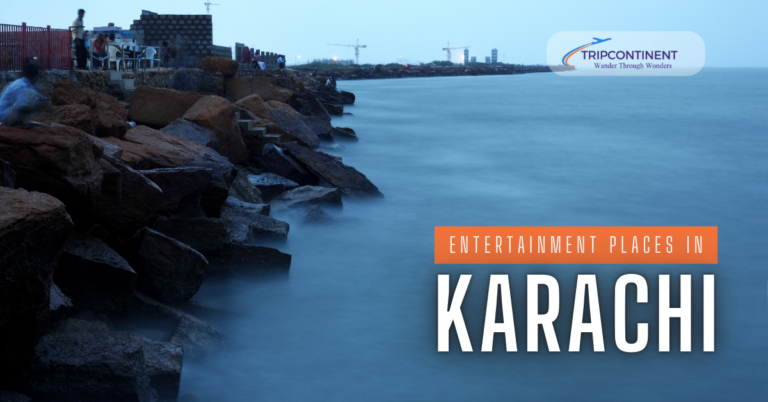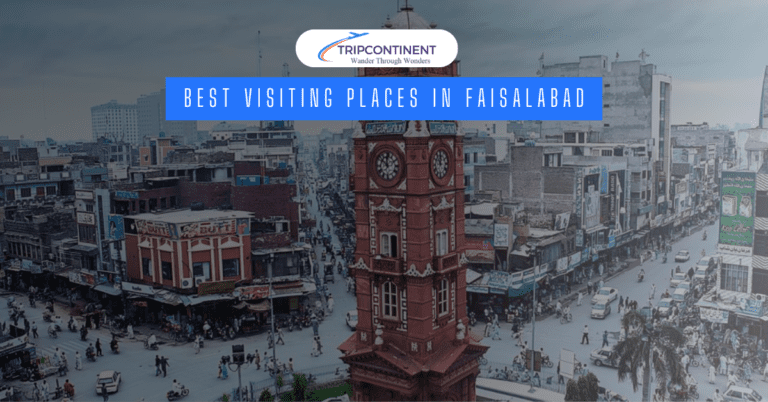The Travel Guide: Best Places to See in Delhi
Delhi, the capital of India, is a bustling metropolis that offers a fascinating blend of history, culture, and modernity. With its rich heritage dating back centuries, Delhi is a city that captivates visitors with its diverse attractions. From ancient monuments to vibrant markets, Best Places to See in Delhi has something to offer everyone.
Whether you’re a history buff, a culture enthusiast, or simply looking for a vibrant city to explore, Delhi has it all. With its diverse attractions, friendly people, and delicious cuisine, Delhi is a city that will leave a lasting impression.
List of the Best Places to See in Delhi
The following is the list of the Best Places to See in Delhi.
- India Gate
- Red Fort
- Rashtrapati Bhawan
- Qutub Minar
- Bahai (Lotus) Temple
- Gurudwara Bangla Sahib
- Jama Masjid
- Humayun’s Tomb
- Akshardham Temple
- Garden of Five Senses
- Crafts Museum
1. India Gate
India Gate, a majestic war memorial in New Delhi, is one of the city’s most iconic landmarks. It stands tall as a tribute to the Indian soldiers who lost their lives during World War I. The monument was designed by Sir Edwin Lutyens, the chief architect of New Delhi, and was completed in 1931.
The India Gate is 42-meter-high made of yellow sandstone. Its design is inspired by the Arc de Triomphe in Paris. The gate is flanked by two ceremonial pathways, which lead to the eternal flame, symbolizing India’s commitment to its soldiers. Visitors can climb to the top of the gate for a panoramic view of the city, including the Rashtrapati Bhavan, the official residence of the President of India.
The India Gate is surrounded by beautiful gardens, perfect for picnicking or simply relaxing. The gardens are also home to a variety of bird species, making it a popular spot for birdwatching. Every year, on Republic Day (January 26), a grand parade takes place at the India Gate, showcasing India’s military might and cultural diversity.
India Gate is not only a historical and architectural marvel but also a symbol of India’s national pride. It is a must-visit destination for anyone traveling to Delhi.
2. Red Fort
The Red Fort, a UNESCO World Heritage Site, is another iconic landmark in Delhi. It was the main residence of the Mughal emperors for nearly 200 years, from 1639 to 1857. The fort is named after its red sandstone walls, which give it a striking appearance.
The Red Fort has numerous courtyards, palaces, and gardens. Some of the most notable structures within the fort include the Diwan-i-Am (Hall of Public Audience), the Diwan-i-Khas (Hall of Private Audience), the Moti Masjid (Pearl Mosque), and the Rang Mahal (Palace of Colors). These structures showcase the opulence and grandeur of the Mughal Empire.
The Red Fort also houses a museum, which displays artifacts from the Mughal era, including jewelry, textiles, and weapons. Visitors can learn about the history and culture of the Mughal Empire through the exhibits in the museum.
Every year, on Independence Day (August 15), the Prime Minister of India hoists the national flag from the ramparts of the Red Fort. This is a significant event in Indian history, marking the country’s independence from British rule.
The Red Fort is a must-visit destination for anyone interested in history, architecture, or culture.
Also see: Forests in the United States
3. Rashtrapati Bhavan
Rashtrapati Bhavan, the official residence of the President of India, is another iconic landmark in the city. It is one of the largest presidential residences in the world, covering an area of 320 acres. The building was designed by Sir Edwin Lutyens, the chief architect of New Delhi, and was completed in 1929.
The Rashtrapati Bhavan is a magnificent structure with a blend of Indian and Western architectural styles. The main building is made of sandstone and features a dome and a portico. The palace is surrounded by beautiful gardens, including the Mughal Gardens, which are famous for their colorful flowers and fountains.
The Rashtrapati Bhavan is not only a residence but also a symbol of India’s democracy and sovereignty. It is a place where important decisions are made and where foreign dignitaries are welcomed. Visitors can tour the palace’s public areas, including the Durbar Hall, the Ashoka Hall, and the Library.
The Rashtrapati Bhavan is a must-visit destination for anyone interested in history, architecture, or politics.
4. Qutub Minar
Qutub Minar, a UNESCO World Heritage Site, is one of the most iconic landmarks in Delhi. It is the tallest minaret in India, standing at a height of 72.5 meters. The minaret was built in the early 13th century by Qutub-ud-din Aibak, the first Sultan of Delhi.
The Qutub Minar is a five-story structure made of red sandstone. The first three stories were built by Aibak, while the remaining two were completed by his successors. The minaret is adorned with intricate carvings and inscriptions, which provide valuable information about the history and culture of the Delhi Sultanate.
The Qutub Minar is surrounded by a complex of other historical monuments, including the Quwwat-ul-Islam Mosque, the Alai Darwaza, and the Iron Pillar. These monuments showcase the architectural and artistic achievements of the Delhi Sultanate.
Qutub Minar is a popular tourist destination and a symbol of Delhi’s rich history. Visitors can climb to the top of the minaret for a panoramic view of Delhi, or simply admire its beauty from the ground.
5. Bahai (Lotus) Temple
The Baha’i House of Worship, also known as the Lotus Temple, is a stunning architectural marvel located in New Delhi, India. It is a place of worship for the Baha’i Faith, a monotheistic religion founded in the 19th century.
The Lotus Temple is named after its unique petal-shaped design. The building is made up of 27 marble-clad petals that unfold to form a lotus flower. The petals are arranged in three layers, with the innermost layer being the tallest. The temple’s design is inspired by the lotus flower, a symbol of purity and peace in many cultures.
The Lotus Temple is open to people of all faiths and backgrounds. Visitors are required to remove their shoes before entering the temple. The interior of the temple is a peaceful and serene space, with a central hall that can accommodate up to 2,500 people. The temple is a popular tourist attraction, and it is often visited by people seeking a place of quiet reflection.
The Lotus Temple is a remarkable example of modern architecture and a symbol of religious tolerance.
6. Gurudwara Bangla Sahib
Gurudwara Bangla Sahib is a prominent Sikh shrine located in New Delhi, India. It is one of the most visited gurudwaras in the country and a significant spiritual and cultural center for Sikhs worldwide.
The gurudwara was built around a well that was dug by the eighth Sikh Guru, Guru Har Rai, in the 17th century. The well was believed to have healing properties, and people from far and wide came to drink its water. Over time, a small shrine was built around the well, and it eventually evolved into the Gurudwara Bangla Sahib.
The gurudwara’s most notable feature is its large golden dome, which is visible from a distance. The dome is surrounded by a white marble facade, and the central courtyard is adorned with beautiful gardens. The main prayer hall, known as the Darbar Sahib, can accommodate thousands of devotees.
One of the most significant events at Gurudwara Bangla Sahib is the Langar, a free community kitchen where food is served to all visitors, regardless of their religion or caste.
The Gurudwara Bangla Sahib is not only a place of worship but also a cultural center. It hosts various religious and cultural events throughout the year, including kirtan (devotional singing), kheer sahib (a sweet dish), and community gatherings.
Gurudwara Bangla Sahib is a must-visit destination for anyone traveling to Delhi. It is a place of peace, tranquility, and spiritual inspiration.
Also see: Safest Cities In The World
7. Jama Masjid
Jama Masjid is a grand mosque located in Old Delhi, India. It is the largest mosque in India and one of the most iconic landmarks of the city. Built by the Mughal Emperor Shah Jahan in the 17th century, the mosque is a stunning example of Mughal architecture.
The mosque’s most striking feature is its massive central courtyard, which can accommodate over 25,000 worshippers. The courtyard is surrounded by a red sandstone facade adorned with intricate carvings and inscriptions. The main prayer hall, known as the Jama Masjid, is topped by a large dome and flanked by two minarets.
The mosque’s minarets are a particularly impressive sight. They are over 40 meters tall and are decorated with geometric patterns and floral motifs. The interior of the mosque is equally impressive, with its marble floors, ornate chandeliers, and beautiful calligraphy.
Jama Masjid is a place of great religious significance for Muslims in India. It is a popular destination for tourists and locals alike, who come to admire its beauty and experience its spiritual atmosphere. The mosque is especially crowded during Friday prayers and on special occasions such as Eid.
8. Humayun’s Tomb
Humayun’s Tomb is a UNESCO World Heritage Site located in Delhi, India. It is the tomb of Humayun, the second Mughal emperor, and is considered to be the first garden tomb in India. The tomb was built in the 16th century by Humayun’s widow, Hamida Banu Begum.
The tomb is a beautiful structure made of red sandstone and white marble. It is surrounded by a large garden, which is laid out in a Persian style. The garden is filled with trees, flowers, and fountains, creating a peaceful and serene atmosphere.
The tomb is a masterpiece of Mughal architecture. The dome is a particularly impressive feature, and it is one of the largest domes in India. The interior of the tomb is decorated with intricate carvings and inlaid marble work.
Humayun’s Tomb is a popular tourist destination, and it is a must-visit place for anyone traveling to Delhi. The tomb is a symbol of the Mughal Empire’s architectural and cultural achievements.
9. Akshardham Temple
Akshardham Temple is a magnificent Hindu temple complex located in New Delhi, India. It is dedicated to Swaminarayan, a prominent Hindu saint of the 19th century. The temple is renowned for its intricate architecture, stunning sculptures, and vibrant colors.
The temple complex covers a vast area and includes several interconnected structures. The main temple, known as the Pranami Mandir, is a stunning example of modern Hindu temple architecture. It is made of pink sandstone and is adorned with thousands of sculptures. The temple’s exterior is a masterpiece of craftsmanship, with detailed carvings depicting scenes from Hindu mythology and history.
The temple complex also includes several other attractions, such as the Musical Fountain Show, the Boat Ride, and the Vedic Village. The Musical Fountain Show is a spectacular display of lights, water, and music, set against the backdrop of the temple.
The Boat Ride takes visitors on a journey through the history of Indian civilization, with animated scenes and sound effects. The Vedic Village is a replica of an ancient Indian village, showcasing traditional Indian crafts, music, and dance.
Akshardham Temple is a popular tourist destination and a spiritual center for Hindus.
You might also like: Largest Oceans in the World
10. Garden of Five Senses
The Garden of Five Senses is a beautiful botanical garden located in New Delhi, India. It is a peaceful and serene oasis away from the hustle and bustle of the city. The garden is named after the five senses: sight, sound, smell, taste, and touch.
The garden is home to a variety of plants, flowers, and trees. Visitors can stroll through the fragrant rose garden, admire the colorful bougainvillea, or relax under the shade of the banyan tree. The garden also has a butterfly garden, where visitors can observe a variety of colorful butterflies fluttering around.
In addition to the botanical beauty, the Garden of Five Senses offers a variety of activities for visitors. There is a nature trail that takes visitors through different parts of the garden, a bamboo court for meditation, and a sensory garden for people with disabilities. The garden also has a small amphitheater where cultural events and performances are held.
The Garden of Five Senses is a perfect place to escape the stress of city life and connect with nature. It is a must-visit destination for anyone traveling to Delhi.
11. Crafts Museum
The National Crafts Museum in New Delhi is a treasure trove of Indian handicrafts and folk art. It showcases the rich and diverse heritage of India’s traditional crafts, offering visitors a glimpse into the skills and artistry of its people.
The museum houses a vast collection of artifacts from various regions of India, including textiles, ceramics, metalwork, woodcarving, and jewelry. Visitors can explore exhibits featuring intricate embroidery, vibrant pottery, delicate lacquerware, and exquisite jewelry designs. The museum also showcases traditional crafts from different Indian communities, such as the tribal people, the rural artisans, and the urban craftspeople.
One of the highlights of the museum is its outdoor gallery, where visitors can see large-scale sculptures and installations. These works of art often depict traditional Indian themes and motifs, such as gods and goddesses, nature, and everyday life. The museum also organizes workshops and demonstrations where visitors can learn about traditional crafts and even try their hand at some of them.
The National Crafts Museum is a place where visitors can appreciate the beauty and diversity of Indian crafts, learn about the history and traditions behind them, and support the artisans who keep these traditions alive.
Conclusion
Delhi, a city steeped in history and culture, offers a unique and unforgettable experience for visitors. From ancient monuments to vibrant markets, the city has something to offer everyone. Whether you’re interested in exploring historical sites, immersing yourself in cultural experiences, or simply enjoying the vibrant atmosphere, Best Places to See in Delhi is sure to leave a lasting impression.
FAQs
What Is Delhi Famous For?
Delhi, a vibrant Indian city, offers a mix of history and culture. Explore ancient monuments like the Red Fort and Jama Masjid, immerse yourself in the spiritual atmosphere of Gurudwara Bangla Sahib and the Lotus Temple, or indulge in delicious street food. Discover the city’s vibrant markets and modern attractions, making Delhi an unforgettable destination.
What Is Special in Delhi for Shopping?
Delhi’s shopping scene is a vibrant mix of traditional markets and modern malls. Chandni Chowk offers a maze of colorful shops selling everything from textiles to spices. Connaught Place, a circular shopping district, houses high-end brands and local boutiques. For handicrafts and souvenirs, visit the National Crafts Museum or the Dilli Haat.
What Is Delhi’s Main Food?
Delhi’s diverse cuisine reflects its rich history and cultural influences. Street food is a highlight, with options like chaat (savory snacks), chole bhature (spicy chickpeas and fried bread), and parathas (stuffed flatbread). For a sit-down meal, try butter chicken, chicken tikka masala, or palak paneer. Don’t miss the delicious kebabs and sweets that Delhi has to offer.
Is Delhi Cheap for Tourists?
Delhi can be a relatively affordable destination for tourists, especially compared to other major cities. Accommodation, food, and transportation can be budget-friendly, especially if you opt for local options and plan. However, costs can vary depending on your travel style and preferences.
What Is the Best Way to Travel Around Delhi?
One of the best ways to explore the city is by using the Delhi Metro. It is indeed one of the most convenient and efficient ways to get around the city. It’s clean, safe, and relatively affordable, making it a popular choice for both locals and tourists.

I’m Sophia Jones, an adventurer at heart from New York City, USA. I live for travel and exploration, always eager to discover new places, meet fascinating people, and try out diverse cuisines. Over the past few years, I’ve traveled to numerous countries, immersing myself in different cultures and creating unforgettable memories.






